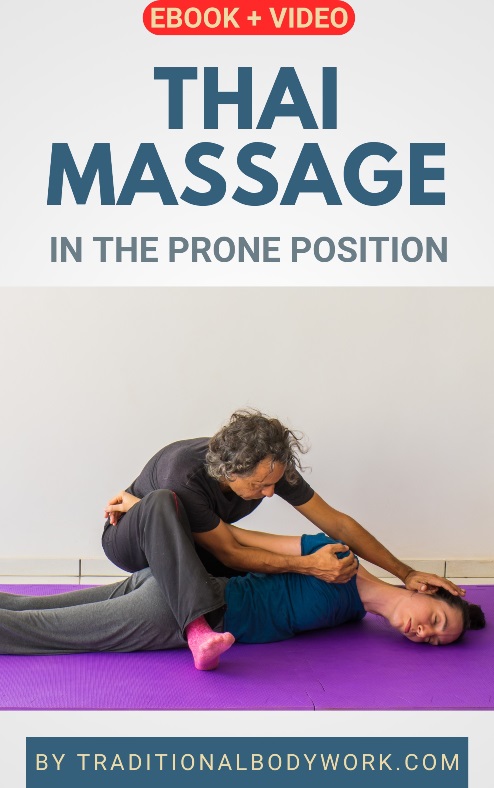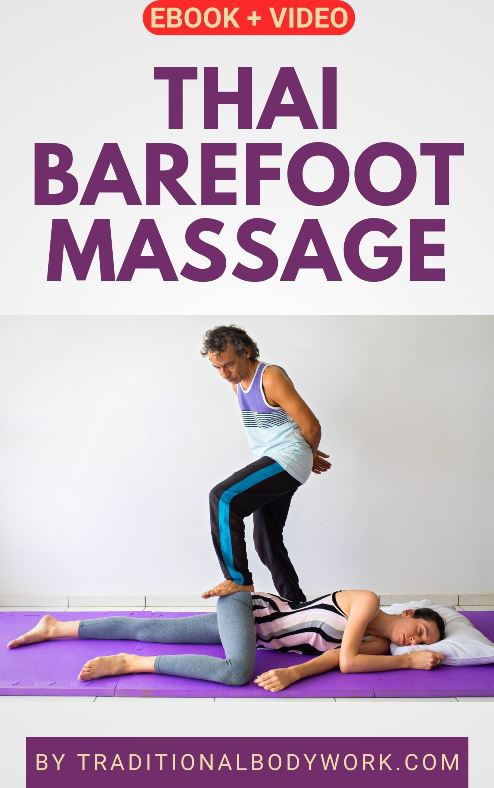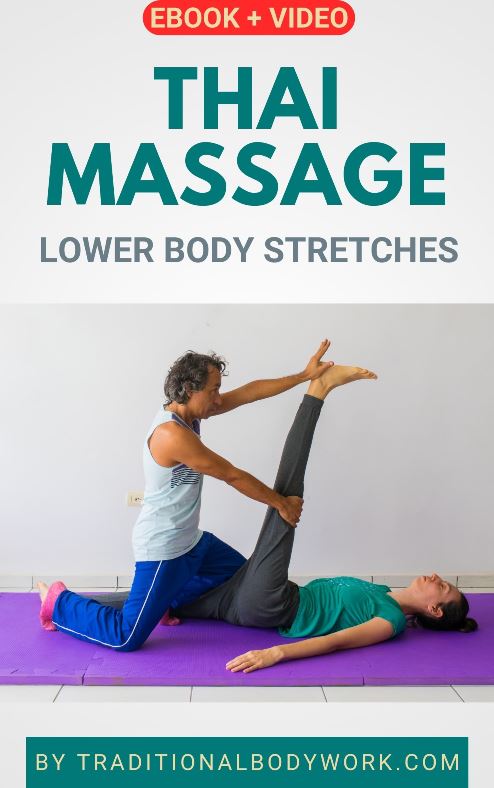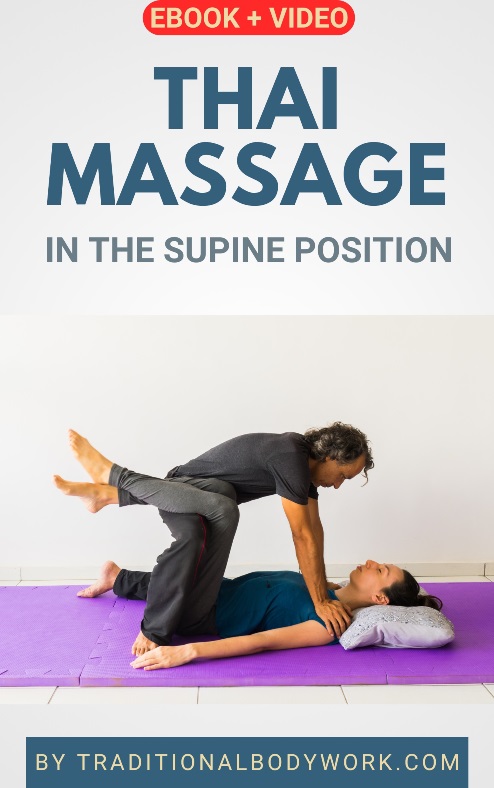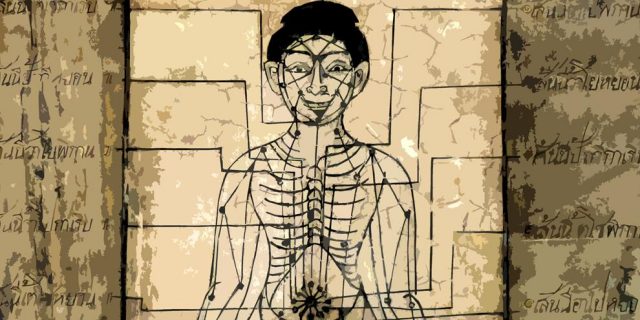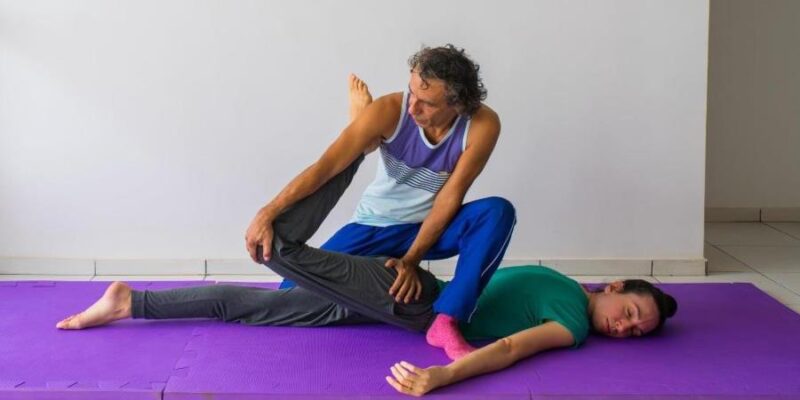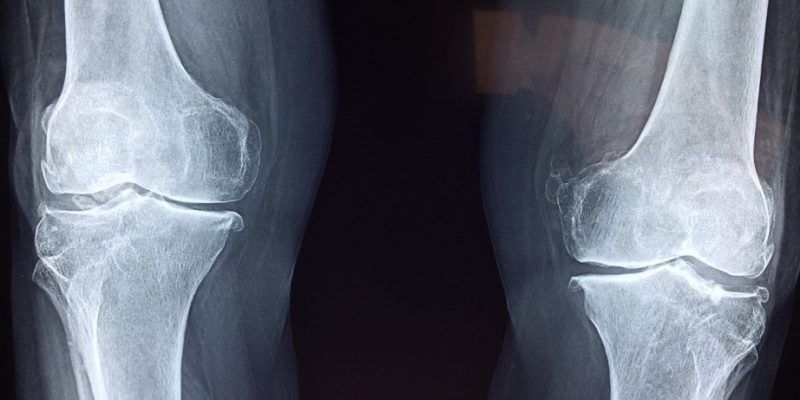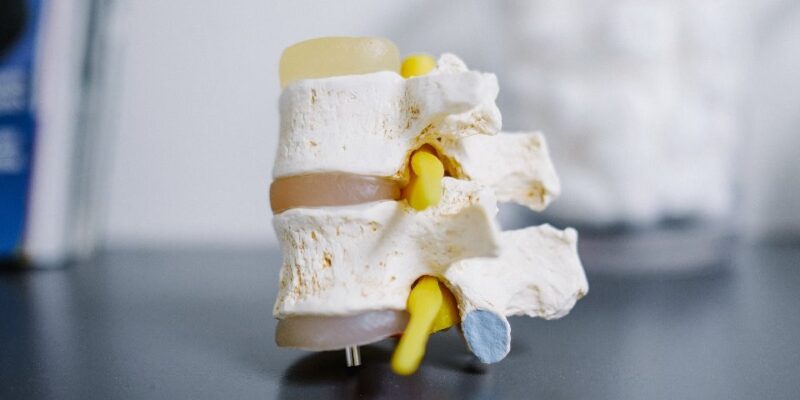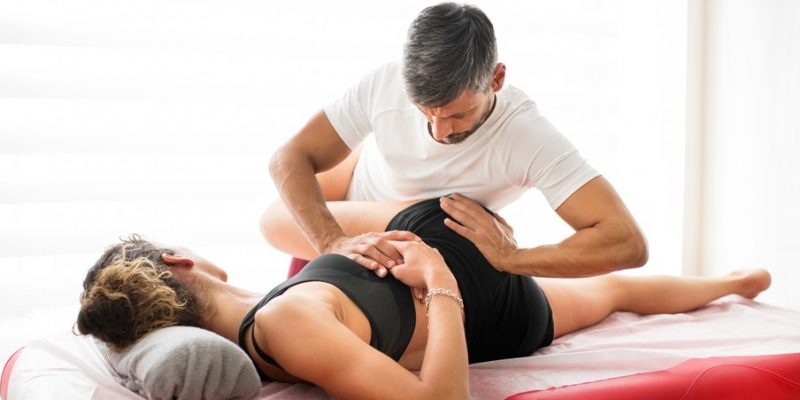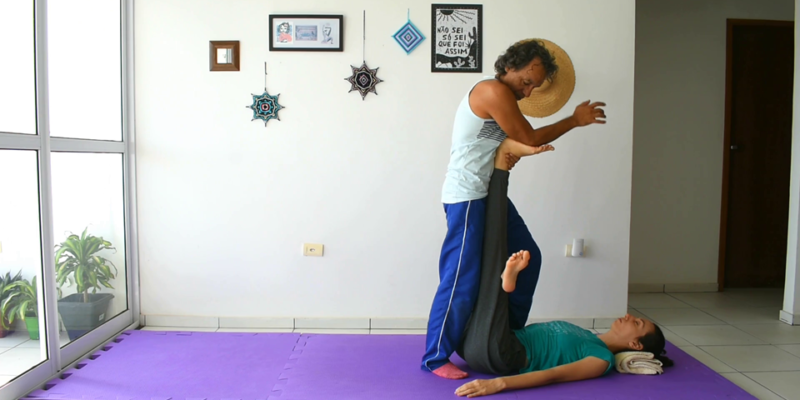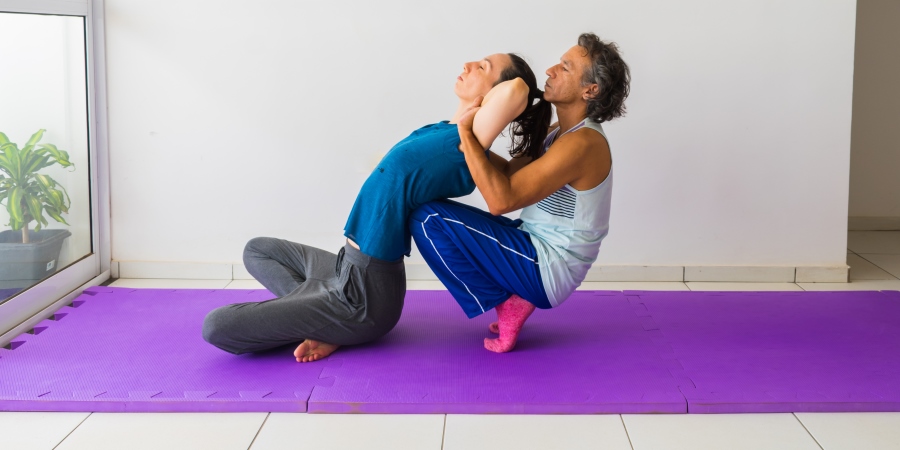
Thai Massage cracks or Thai Massage cracking is a subset of Thai traditional bone setting practices performed by using specific Thai Massage techniques. In a general sense, one could consider the Thai cracks a type of indigenous Chiropractic.
In this post, we’ll talk about these “notorious” Thai Massage cracks, but do mind that we don’t discuss the broader realm of setting fractures or broken bones.
Additionally, at the end of this post, you’ll find a video in which we demonstrate several Thai Massage cracking techniques, notably for the dorsal vertebrae of the spinal column (the back). You will also see some cracks for the neck (the cervical vertebrae of the spine), and the ankle joints.
But let’s first discuss Thai Massage cracking.
Spontaneous and Deliberate Cracks in Thai Massage
Many of whom have received a traditional Thai Massage are acquainted with “bone cracks,” which feel and sound like a more or less loud “pop,” “snap,” “click,” or indeed … “crack.”

Typically, these are harmless, spontaneous flips or pops that can happen at any moment during a session and almost everywhere in the body, being spontaneous realignments i.e. adjustments of certain bones or joints. In fact, because muscles and other bodily tissues relax during a session, bones tend to move and get back into their natural and proper location, or release build-up pressure and tension, while sometimes making a sound when doing so.
Nonetheless, Thai Massage cracks can also be carried out deliberately, usually performed with a therapeutic aim. In those cases, you’ll find different types of cracking techniques in Thai Massage for different body parts, which commonly include cracks for the back (vertebral bones of the spinal column), the hip, ankle, wrist, feet, and finger joints, and the neck (cervical vertebrae).
As a rule, deliberate cracks are done at the end of a massage treatment session when the receiver’s muscles are in the most relaxed state possible. It’s done with an aim of helping the realignment of bones, and by using certain manual techniques that need quite some delicate mastering. When done properly, the receiver experiences quite an intense feeling of relief and relaxation, and moreover, it can actually cure pains that were due to bone or joint misalignment.
The deliberate cracks in Thai Massage are typically carried out by pulling or pushing with a rather sudden movement, while the receiver is placed in a certain position, often assisted by putting pressure on surrounding muscle areas of the affected bones or joints. Cracking can also be done more gently and naturally by carrying out spinal twists (torso stretches).
It goes without saying that the receiver needs to be physically and mentally prepared for the cracking action, because else it may have an adverse effect, notably of the receiver experiencing trauma and getting into some sort of shock, and muscles getting into a spasm which causes pain.

By the way, today it’s generally thought that the pop-sound is caused by small gas bubbles in the joints or between other movable bones. When applying cracks (or when they happen spontaneously), it’s thought that it changes the volume and pressure between moveable bones (typically the synovial joints), which is believed to cause gas bubbles in the joint cavity that subsequently “pop,” giving the particular sound. Another reason is that contact and friction between bones, joints, tendons, and soft tissue can just make sounds.
Nevertheless, it’s no secret that there’s quite some general hesitation around cracking. Some think that it may be harmful for the body or joints, although there’s no scientific proof of this. The answer is most likely that of “moderation,” meaning that occasional cracking can help relieve pressure and correctly reposition bones and joints, but repetitive and habitual cracking is perhaps less advised. That is, the latter may lead to overstretched ligaments, which then allow for too much movement and joint instability, which in its turn may more easily lead to further injuries.
Cracking Precautions and Contraindications
A word of caution is at its place here. Please don’t perform Thai Massage cracking techniques on receivers if you don’t have the proper training and experience. Additionally, if a crack is followed by pain or injury, one should always consult a professional healthcare provider.
Mind also that deliberate cracking in the West is usually only reserved for professional Chiropractors or other specialized healthcare providers. However, in Southeast Asia, deliberate cracking is often a normal part of a traditional massage treatment.
And finally, cracking or no cracking, always take the proper Thai Massage precautions and contraindications into account.


